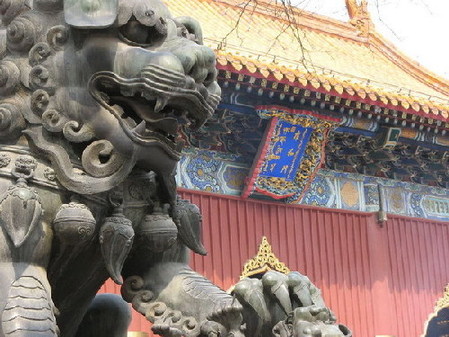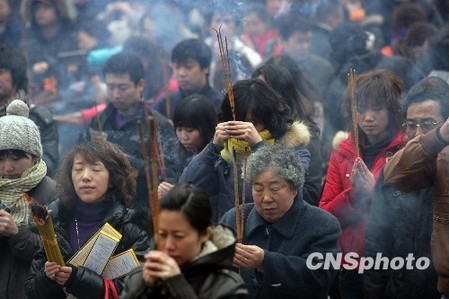Chinese Way
Burn joss sticks of good luck to mark the Lantern Festival
Updated: 2011-02-16 10:16
(CRIENGLISH.com)
With the Lantern Festival, which falls on February 17th this year, around the corner, the curtain will come down on the half-month celebration of the Chinese Lunar New Year.
To mark this special season, apart from holding a lantern, and playing the lantern riddles with family and friends, a growing majority of Chinese people nowadays would go to the Lama Temple, known as Yonghegong, to burn some joss sticks, praying for good luck and fortune for the New Year.

The Lama Temple is one of the most popular temples for doing obeisance for blessings in Beijing. According to employees working here, the number of visitors on the first day of the Lunar New Year surged to a record high of 66,000. It is estimated that the Lama Temple is going to embrace another peak on the Lantern Festival.
Claimed to be the largest and most perfectly preserved lamasery in present-day China, Lama Temple has a history of more than 265 years. It used to be the residence of Emperor Yongzheng and Qianlong of the Qing Dynasty and was transformed into a lamasery later.

Among numerous Buddha figures, Tangka and cultural relics that you can see at Lama Temple, the best well-known one is a white sandal wood Buddha. The 1.8-meter figure is an important testimony to the friendship between Han and Tibetan people, and also the largest wood Buddha figure in China.
Specials

Spring Festival
The Spring Festival is the most important traditional festival for family reunions.

Top 10
A summary of the major events both inside and outside China.

A role model
Alimjan Halik had been selected as the "Cyberspace Personality Who Moved the Hearts of the Chinese in 2010".